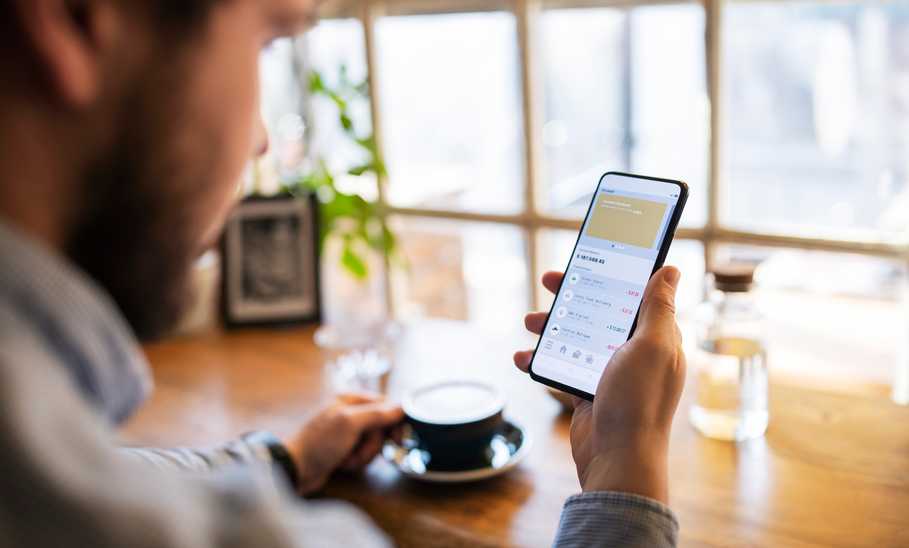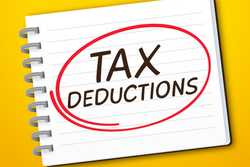- Convenient transactions
- Added security protection
- Contactless payments
What Is a Digital Wallet and How Does It Work?

Our evaluations and opinions are not influenced by our advertising relationships, but we may earn a commission from our partners’ links. This content is created by TIME Stamped, under TIME’s direction and produced in accordance with TIME’s editorial guidelines and overseen by TIME’s editorial staff. Learn more about it.
A digital wallet is the electronic version of the physical wallet you carry. It allows you to make purchases or send money electronically to people and businesses without a physical card or cash. Technology for digital payments continues to improve and evolve, impacting how we manage our money and make transactions. Digital wallets are becoming a more prevalent form of payment among people and businesses every year. They can be used to store more than just money: Digital wallets can also hold gift cards and membership cards. Here's a closer look at digital wallets, how they work, and the different types of digital wallets you can use.
You can download digital apps to your computer or mobile device to enable payments. Wallet options may depend on your mobile device, as some are available only for specific operating platforms. Apple Pay, for example, is only available to iPhone and Apple device users. Google Wallet is specifically for Android users. Other digital apps are available regardless of platform.
Some digital apps are primarily designed for payments, while others are best known for a wider range of transactions, such as sending money to friends and family.
Once you set up an account, you can add payment sources by entering your card or bank account information through the mobile app or online. Some digital wallets, such as Apple Pay, require you to activate optional security features on your device, like a passcode, to use the service.
The steps to pay for purchases or send money vary between different wallets. To send money, navigate to the payment section of the app and enter the recipient's contact and payment information. Some wallets include a memo area so you can enter transaction details.
To make a mobile payment in person at a retailer, verify that the merchant accepts digital wallet payments. Then, unlock and authorize the wallet on your device. Hold your device close to the card reader to transmit payment information from your wallet to the reader.
Whether or not you realize it, you're probably familiar with popular digital wallets. If you frequently send money or make purchases on your phone, chances are you've used a digital wallet before. Here are some examples of popular digital wallets.
Cash App is a digital wallet on iOS and Android that lets you send and receive money. Users can link their bank accounts and credit cards to Cash App as payment sources or use their Cash App account balance.
Peer-to-peer payments aren't the only services available through Cash App. You can get a Cash App debit card, invest in stocks and Bitcoin, and even file your taxes for free.
LEARN MORE: Cash App Review
You've probably seen PayPal listed as a payment option when shopping online. This popular digital wallet also allows you to send and receive money from people and businesses. Accounts are free to create and use, although some transactions incur fees.
PayPal users can link bank accounts and cards to their accounts to use for payments or to send money. You can also use your PayPal balance to fund payments. PayPal is accessible online or through the mobile app, available on iOS and Android.
Venmo is one of the most popular digital wallets. The Venmo app is available for iOS and Android. Venmo allows you to send money to anyone with a Venmo account. You can link bank accounts or cards to your Venmo account as payment funding sources.
Users can send money from one of their added payment methods or their Venmo balance. Also, you can transfer funds from your Venmo balance to a linked bank account. The digital wallet app has expanded its services with a credit card, debit card, and teen debit card.
LEARN MORE: Venmo Review
Apple Pay is a digital app exclusively for individuals who use Apple mobile devices such as iPhones, iPads, and Apple Watches. Users can add debit or credit cards to the Wallet app on their iPhones. Apple Pay is built into Apple devices automatically, so there's no need to download additional apps.
You can use your wallet for mobile purchases at merchants that accept Apple Pay. With Apple Pay, you can send money to people using Siri or Messages. Funds received from other people go into an Apple Cash account. You can use those funds directly within the app or transfer them to a linked account.
Here’s more detail on the advantages that come with using a digital wallet.
Digital wallets offer added convenience compared to other payment methods. People generally have a mobile device with them, even when they're not carrying a physical wallet. Even when you have a physical wallet, paying for something with a digital wallet can be quicker. Instead of thumbing through your wallet for cash or a card, simply hold your device to a card reader at stores.
Digital payment companies know that their products and services require the highest levels of security to protect their customers' information. Digital wallets employ the latest security technologies. Also, some wallets require you to enable certain security features on your device for them to work.
That might not have been an issue in the past. But since the pandemic, processes that enable contactless payment are ever more enticing: Digital payments require no contact to make payments or send money.
While digital wallets are becoming more popular, there are some disadvantages to consider before using them.
More merchants and businesses accept payments from digital wallets, but they still aren't as widely accepted as credit cards, debit cards, and cash.
Digital wallets are relatively simple to use but require some setup, from downloading the app and creating an account to adding payment cards and learning how to use the wallet.
Most digital wallets live on mobile devices, although some are accessible online. While convenient, this creates a potential risk if your device breaks, or is lost or stolen.
There are three primary types of digital wallets. Each wallet type operates somewhat differently, with different benefits and restrictions.
Closed digital wallets only allow you to make transactions through the wallet issuer. Amazon Pay is an example of a closed wallet. It allows consumers to add payment methods specifically for Amazon.com purchases.
With a semi-closed digital wallet, you can make purchases through specific partner merchants and locations. Examples of semi-closed wallets include Apply Pay and Venmo.
An open digital wallet lets you make purchases through select merchants and perform other transactions, such as transferring funds or making bank withdrawals. PayPal is a popular open digital wallet.
As the world moves closer to cashless transactions, digital wallets will become more important. Right now, they are not yet entirely necessary. Digital wallet companies use the latest encryption technology and security measures to protect your information and transactions, but users also play a role in keeping their own information safe. If you use digital wallets, set complex passwords and enable any safety features included with your device or the digital wallet.
Download the app online or on your phone or other mobile device to use a digital wallet. Set up an account and add one or more payment sources. Navigate to the payment section of the wallet to send money to another person or business. For in-person use, unlock your device and authorize your digital wallet. Then, hold your device to the card reader at the store register to transfer your payment information.
Digital wallets use modern security features to protect users from fraudulent charges and theft. Safety measures include encryption, virtual card numbers or tokenization, two-factor authentication, and PIN codes. As with any digital account, your information is more secure when you follow safe practices like setting complex passwords, using secure networks, and enabling optional safety measures on your devices and accounts.
App stores allow you to download most digital wallets on your mobile device or computer. Once downloaded, you can set up an account, and add payment accounts and cards.
The information presented here is created by TIME Stamped and overseen by TIME editorial staff. To learn more, see our About Us page.



